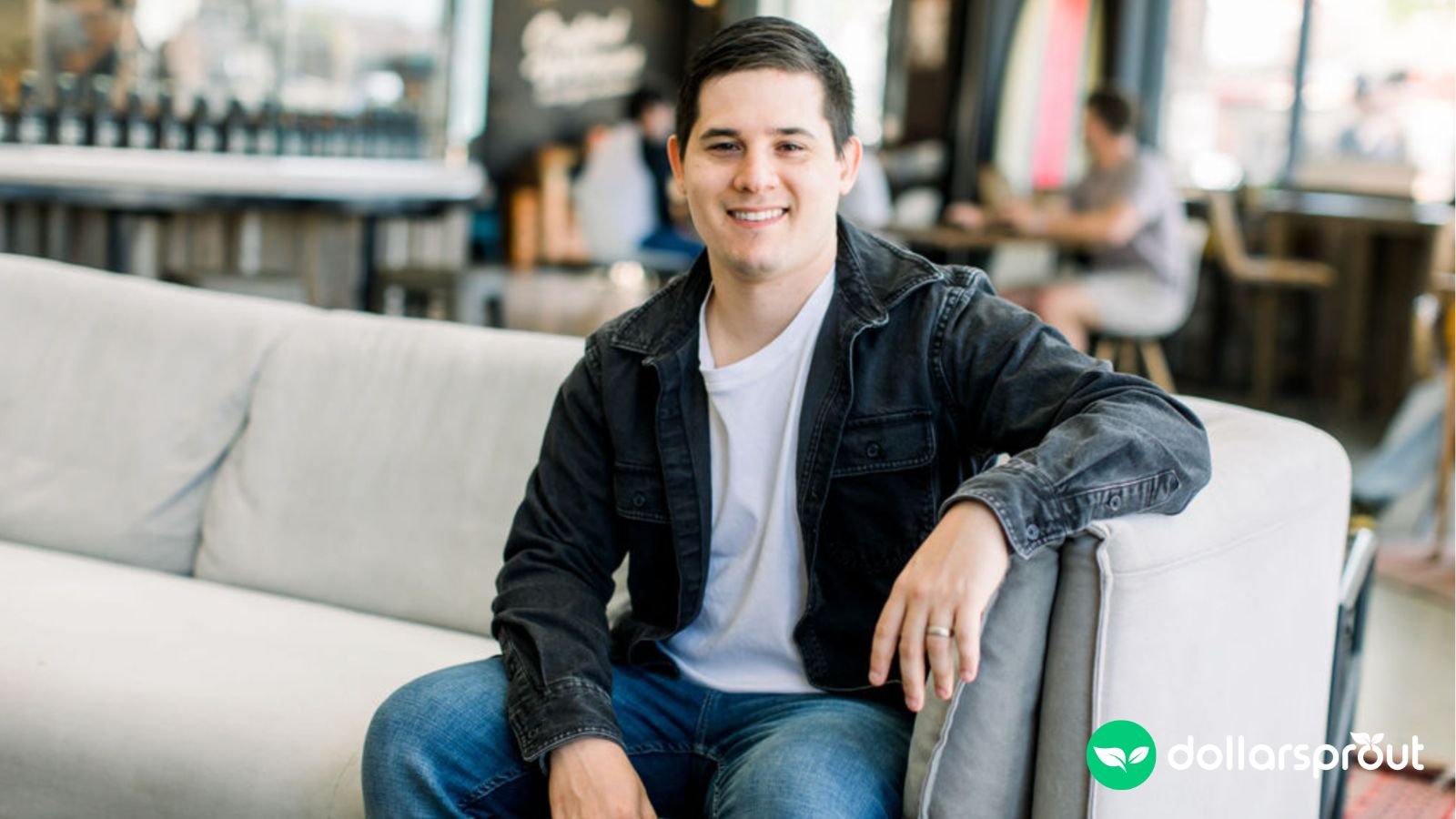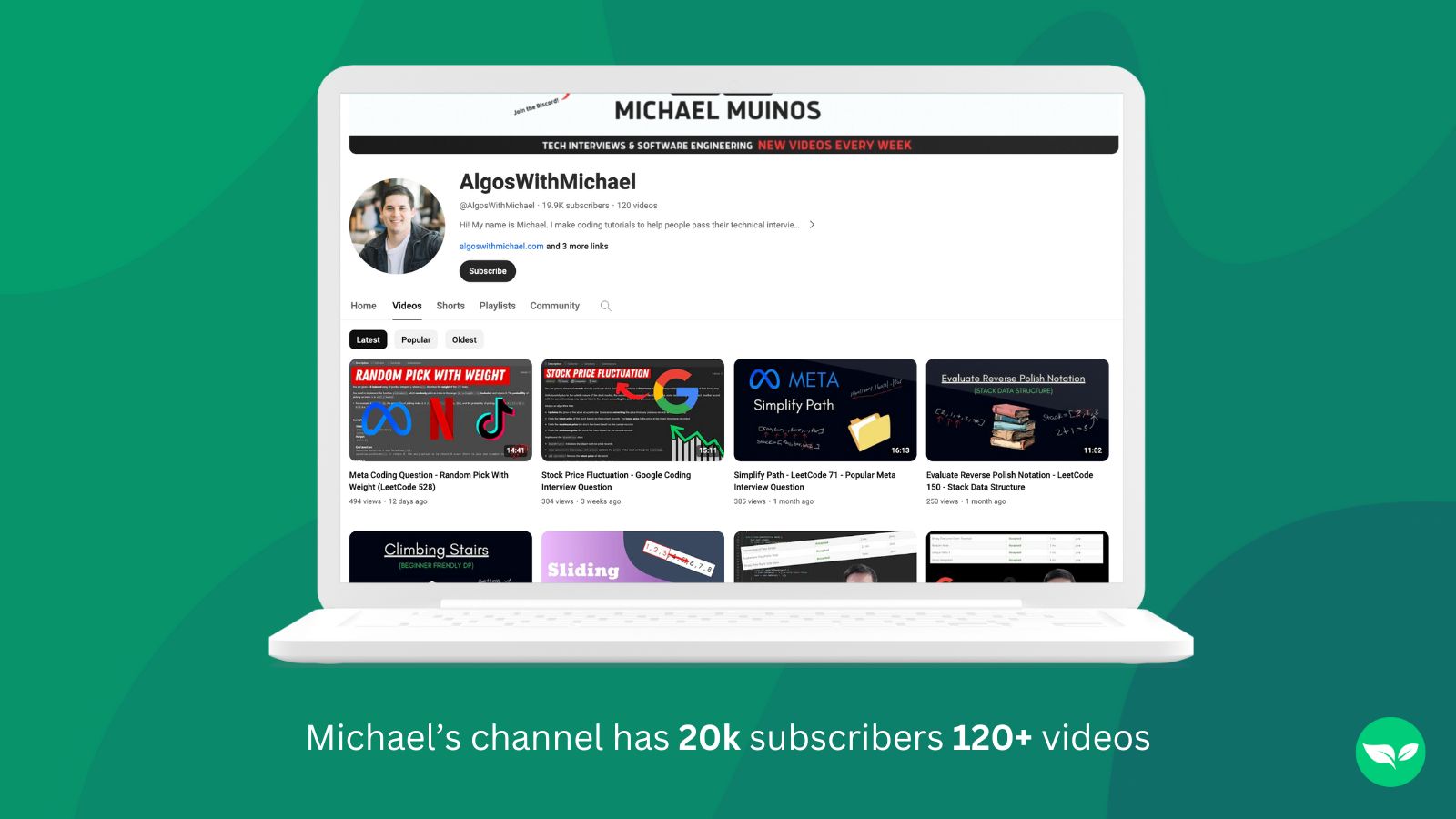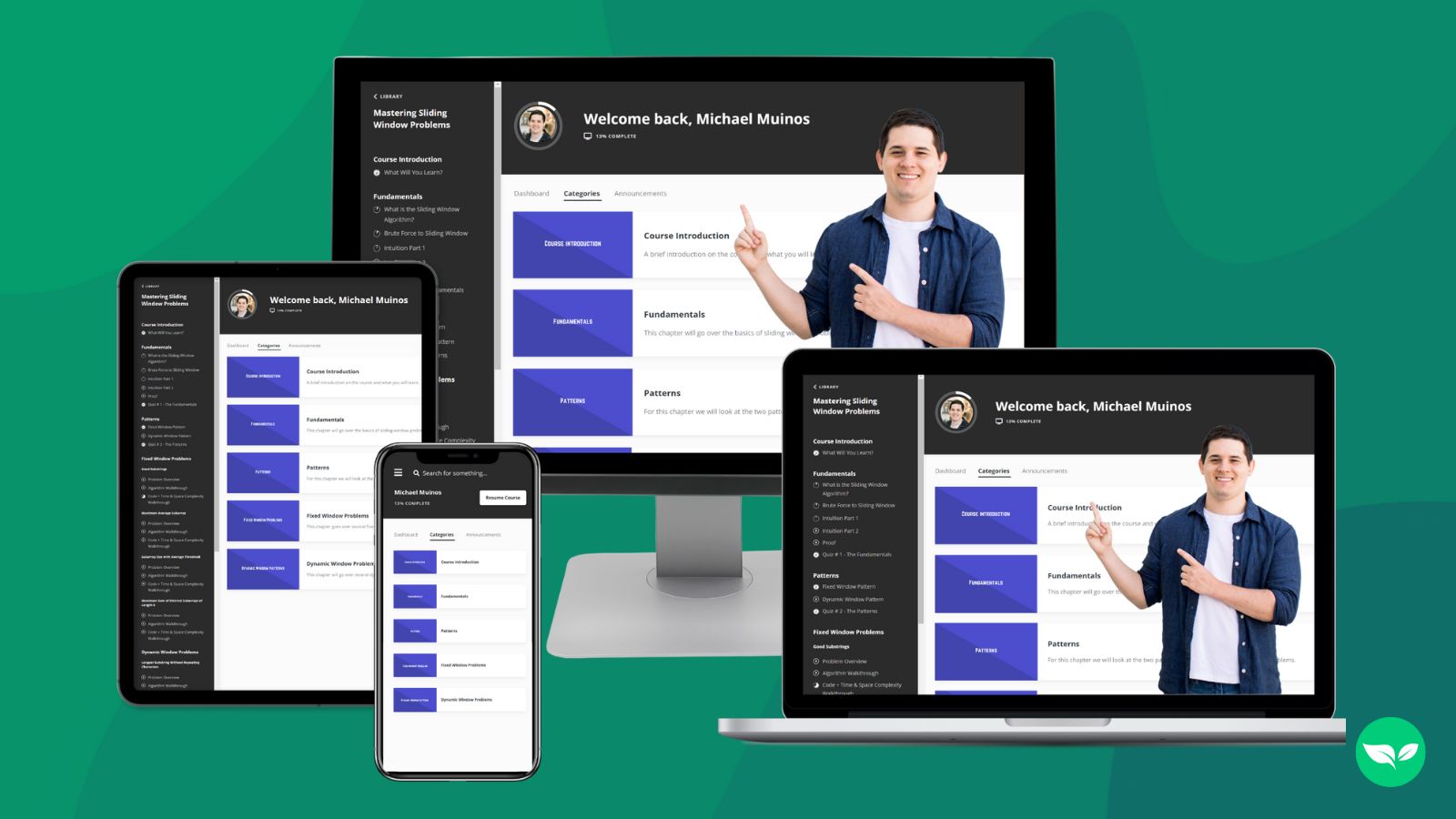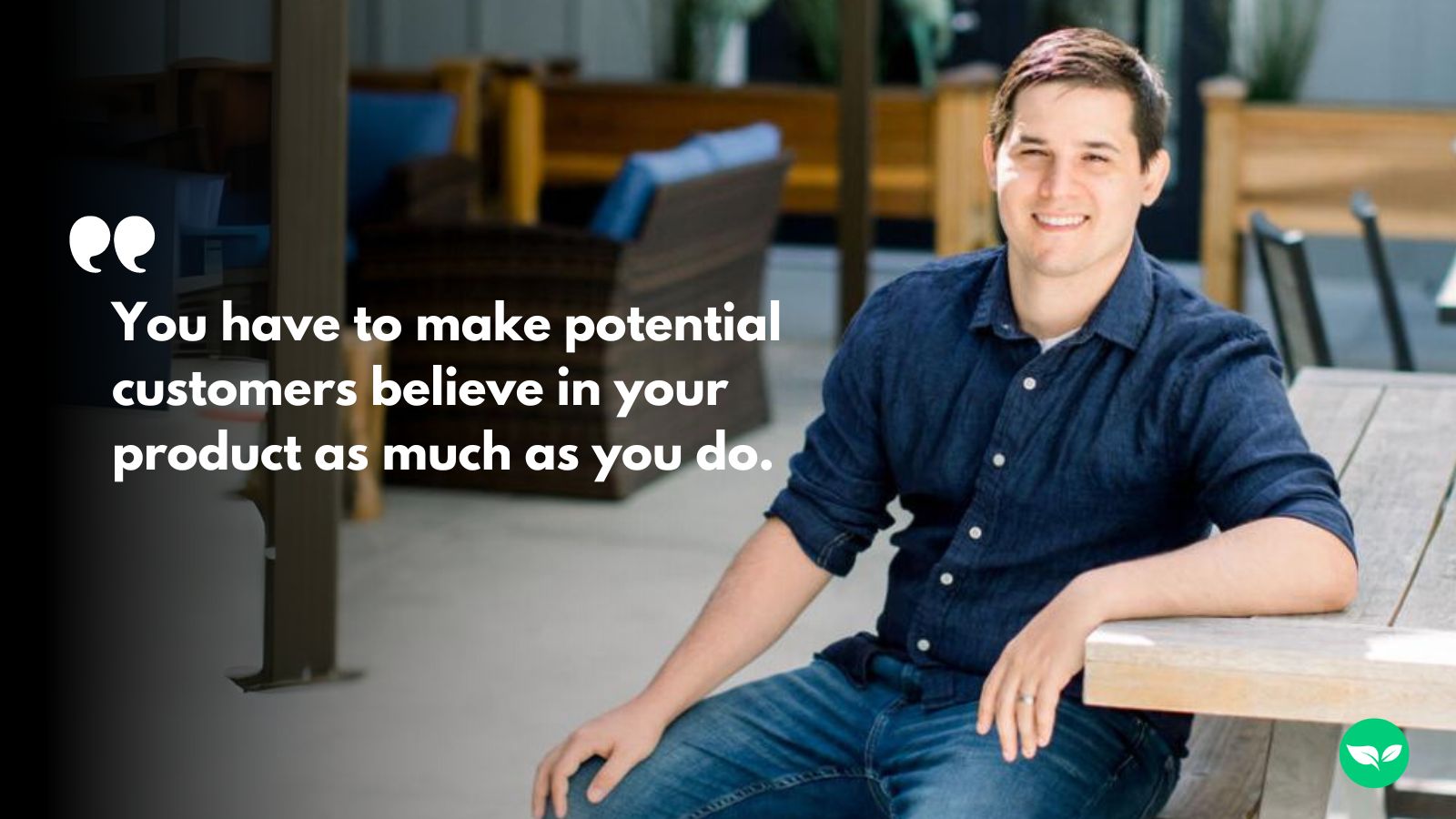How One Googler is Helping Students Land Lucrative Tech Gigs
Michael Muinos whiffed on his first round of interviews with Big Tech. Now a Google Software Engineer, he's helping online students land lucrative tech gigs via the lessons he learned from previous mistakes.

The online course industry is bustling with new creators coming onto the scene every day. And despite the crowded market, there are still plenty of opportunities to get paid for teaching what you know.
Michael Muinos is proof that, with the right offer marketed towards the right people, there is still room for new course creators.
Here’s the inspiring story about how Michael got started selling online courses — with no marketing or business experience.
Finding his niche

For aspiring software engineers eyeing positions at big tech companies, acing the technical interview is often the make-or-break moment. After struggling through several interviews at top tech companies like Google, Twitter, and Salesforce, Michael realized his technical interview prep wasn’t good enough — and also that he probably wasn’t alone in that regard.
“What initially inspired me to create the Algos With Michael platform is my experience going through the interview process at different tech companies” Michael explains.
His struggle wasn’t just about solving coding problems; it was about finding an efficient way to prepare for them.
He discovered a strategy that worked wonders for him — a focus on studying patterns rather than rote memorization of solutions. “Once I started taking this approach for my own study preparation, interviews became significantly easier, and I was eventually able to land my dream job,” he recalls.
Surprisingly, he found that no other coding interview prep websites offered this method, which focuses on understanding underlying patterns in data structures and algorithms. This gap in the market is the core component of any successful online business idea.
He envisioned Algos With Michael as a platform that breaks down coding interview topics into digestible patterns, making complex problems more approachable and solvable.
Michael set about creating his platform with a clear goal: to launch with a pilot course that would serve as a proof of concept.
Related: How One Med Student Makes $190K a Year Selling Online Courses
Getting an idea to market quickly
Michael chose “Mastering Binary Search Problems” as the launchpad for his platform, capitalizing on his expertise in one of the most commonly asked topics in tech interviews.
Binary search, a fundamental concept in software engineering interviews, was a topic Michael felt exceptionally confident in, which allowed him to develop and refine the course content swiftly. His choice was strategic—starting with a strong subject not only ensured a high-quality inaugural course but also set a solid foundation for the credibility of his platform.
Explaining his choice, Michael said, “I knew Binary Search inside and out, and it’s a topic that can really make or break an interview. I wanted to create something that not only helped others master it but also showcased the effectiveness of my teaching approach right from the start.”
To bring this course to life, Michael focused on creating high-quality, video content that was structured yet flexible enough to engage users at various learning stages. He utilized his social media platforms to gauge interest and gather initial feedback, ensuring his content met the expectations and needs of potential students.
His first course served as a proof of concept, demonstrating the unique value of a pattern-based approach to learning coding for interviews. This initial launch not only validated his educational model but also built a loyal following that was eager for more specialized content, setting the stage for the expansion of Algos With Michael.
“Launching with ‘Mastering Binary Search Problems’ was a test to see if my followers would see value in a comprehensive, pattern-based learning course. The positive feedback was overwhelming and confirmed that we were on the right track.”
Related: How to Start a Business in 9 Simple Steps
Standing out in a crowded space
There are dozens, if not hundreds, of other online courses that teach technical interview prep. So how did Michael make his content different?
“Other technical interview prep resources will teach you how to solve individual problems, but the issue with that approach is the sheer number of potential questions. You could end up feeling overwhelmed and underprepared.”
Instead, Michael’s approach trains students to recognize underlying patterns across various coding challenges, equipping them with a more versatile and adaptable skill set.
This methodology not only helps students tackle a wide array of problems with confidence but also prepares them for unexpected questions. Michael believes that understanding patterns is key to navigating the unpredictable nature of tech interviews, where a single question can have multiple layers of complexity.
“Algos With Michael will teach you how to solve the majority of questions for a specific coding topic using an easy-to-understand pattern that you can adapt,” Michael says. He acknowledges that while there will always be outliers, the goal is to prepare for the majority, not the minority of problems.
Building the right audience

To effectively market Algos With Michael and attract a dedicated following, Michael went all-in on his YouTube channel. Now he has roughly 20,000 subscribers eager to enhance their tech interview skills.
The most successful of his marketing strategies involves producing free, high-quality content related to coding interviews, which not only positions him as an authority in the field but also funnels potential students to his course platform.
Michael explains the synergy between his YouTube content and course offerings: “Every video I post is an opportunity to promote Algos With Michael. I always make sure to include links to the platform in the video description, which significantly drives traffic to our courses.” This approach harnesses the power of content marketing, offering value upfront while subtly guiding viewers towards a paid resource where they can delve deeper into complex topics.
The effectiveness of this marketing strategy is evident in the numbers. “Nearly all of my traffic to the Algos With Michael platform is a result of my YouTube channel,” Michael shares. His channel not only helps in building an audience but also in converting viewers into paying customers, demonstrating the power of educational content as a marketing tool.
Moreover, Michael emphasizes the importance of consistent and relevant content creation: “It’s about staying relevant and continuously engaging with your audience. Each piece of content is crafted to address their current challenges and needs, which keeps them coming back for more.”
Michael’s process for creating a course

Creating engaging and effective courses for Algos With Michael is a meticulous process that involves identifying needs, scripting detailed content, and producing high-quality videos. Michael shared with us the five-step framework that he uses for creating new course content.
Step 1: Identify a Pattern
Or, in other words, coming up with a specific topic.
For Michael, the first step in developing a new course is recognizing a common pattern that can solve a broad range of problems within a specific coding topic. He begins this process by analyzing problems from popular coding platforms like Leetcode to identify those most frequently asked in tech interviews.
“I solve 10-20 of the most popular coding questions for a topic, looking for similarities in their solutions. If I find a consistent pattern, that becomes the core of a new course,” Michael explains.
Step 2: Engage the Community
Before fully committing to a new course, Michael seeks to validate the need among potential learners.
“I try to answer the question ‘Do people even need help learning this topic?'” His go-to sources for that initial validation are his YouTube channel and Discord.
Step 3: Scripting and Planning
Once a course topic is validated, Michael meticulously scripts every lesson. “I write down every sentence I will say in the videos in Google Docs, noting where animations should emphasize key points,” he details.
This script is the blueprint for the course, ensuring clarity and coherence in the final product. “Each course typically includes 40 videos, so the scripts are comprehensive, usually over 50 pages long,” Michael adds.
He says a full script for a course takes around 2-3 weeks.
Step 4: Filming and Editing
With the script in hand, filming becomes a streamlined process. “Since everything is scripted, filming is straightforward—I just deliver the lines, which minimizes errors and editing time,” says Michael.
However, the most time-consuming part of the process is the video editing. “I focus on custom animations for each video to enhance understanding and engagement, which can take anywhere from 6 to 8 weeks for a full course,” he shares.
Step 5: Launch and Promotion
The final step involves integrating the new course into the Algos With Michael website and promoting it across various channels. “I create thumbnails, write video descriptions, and ensure everything works seamlessly on the site,” Michael mentions.
He continues, “Keeping my email list informed and promoting the course through YouTube videos are crucial for generating initial sales and ongoing interest.”
His advice for aspiring entrepreneurs

Michael’s journey from software engineer to educational entrepreneur taught him a lot about starting and sustaining successful side hustles. For others looking to venture into the world of educational technology or any entrepreneurial pursuit, he offers his advice.
Embrace a structured schedule
One of Michael’s key recommendations is the importance of maintaining a disciplined schedule. “Having a schedule and sticking to it is crucial,” Michael stresses.
He explains that consistent effort is essential to build momentum and keep various aspects of the business moving forward. “A schedule gives you structure throughout your week so that you are never left wondering what you should be working on next,” he adds.
Build a strong online presence
Michael emphasizes the role of a strong online presence in reaching and engaging potential customers. “You have to make potential customers believe in your product as much as you do. For that, a well-designed website and convincing sales copy are essential,” he advises. Michael’s success with Algos With Michael largely stems from his effective use of YouTube and other social media platforms to generate interest and drive traffic.
Offer value first
A significant part of Michael’s marketing strategy involves providing free, valuable content to his target audience. “By offering free educational content on YouTube, I not only help potential students but also establish credibility and trust,” he explains. This approach encourages potential customers to invest in more in-depth courses, knowing the quality and value they can expect.
Listen to your audience
Feedback is another cornerstone of Michael’s strategy. He actively seeks out and listens to student feedback to continuously improve his offerings. “Reaching out to existing customers for direct feedback via email or offering free access in exchange for detailed reviews has been invaluable,” he says. This feedback loop allows him to refine his courses and better meet the needs of his students.
Keep learning and adapting
Finally, Michael advises aspiring entrepreneurs to remain students themselves—constantly learning and adapting to changes in their industry. “The landscape of online education is constantly evolving, and staying updated with the latest teaching strategies and technological tools is key,” he notes.
Related: How One Recent Grad Started a $2,000 a Month Shopify Side Gig






